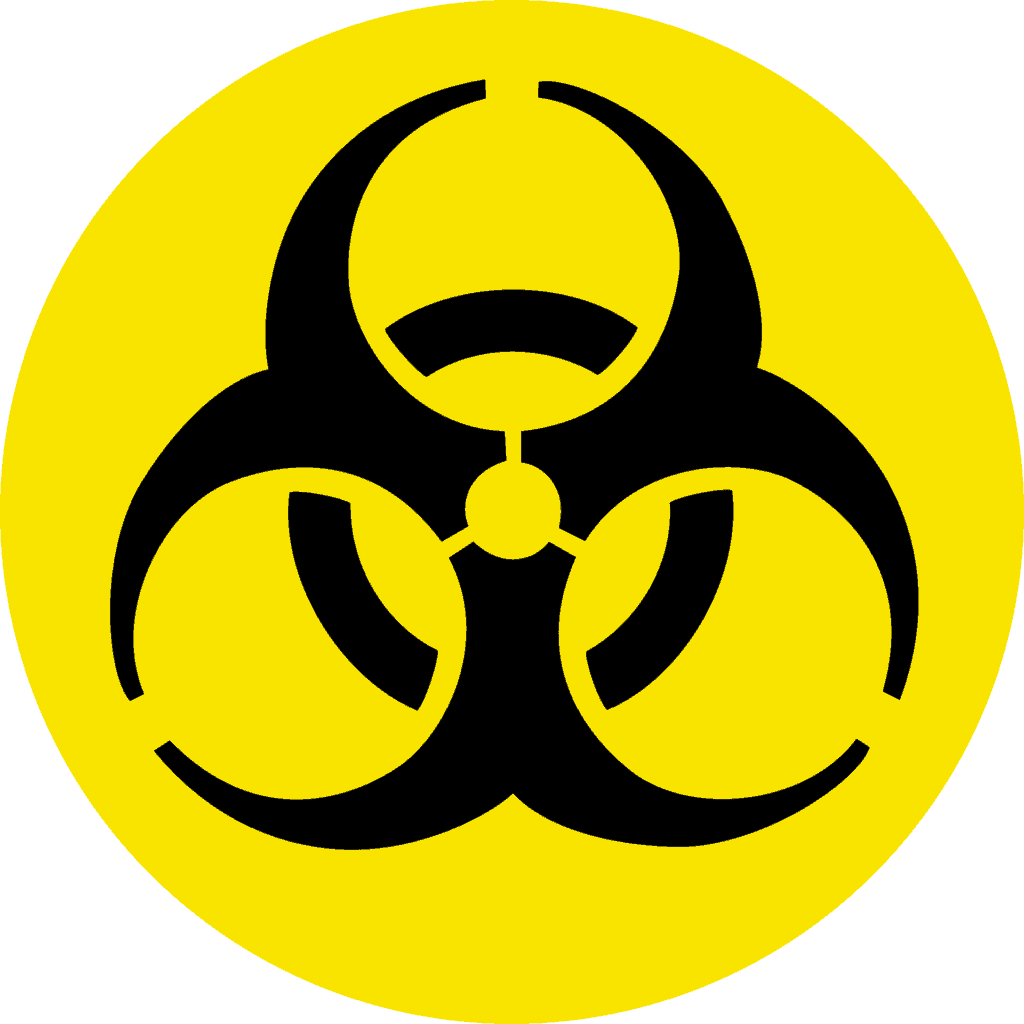When a biological substance poses a threat to the health of living organisms, primarily humans, it is termed as biohazard or biological hazard. This could include a sample of a microorganism, virus or toxin (from a biological source) that can affect human health.
A biohazard could also be a substance harmful to other animals.
Biological agents that can cause cause a biohazard includes micro organisms and toxins produced by living organisms.
Influenza is an example of a biohazard which affects a broad population of workers.
A Biohazard can result from biological waste often termed as biohazardous waste. Biohazardous waste, also called infectious waste or biomedical waste, is any waste containing infectious materials or potentially infectious substances such as blood.
Sharp wastes such as needles, blades, glass pipettes, and other wastes that can cause injury during handling are of utmost concern.
Biomedical Wastes includes:
• Human or animal specimen cultures from medical/pathology labs. • Cultures and stocks of infectious agents from research and industrial laboratories.
• Wastes from the production or testing of bacteria, viruses, spores and vaccines, certain discarded animal vaccines, and culture dishes and devices used to transfer, inoculate and mix cultures.
• Human or animal specimens, tissues, parts, fluids, or carcasses that are suspected of being contaminated with infectious agents known to be contagious to humans.
• Waste which contains recognizable fluid blood, fluid blood products, containers or equipment containing blood that is fluid, or blood from animals known to be infected with diseases which are highly communicable to humans.
• Discarded materials contaminated with excretion, exudate or secretions from humans or animals that are contaminated with highly communicable diseases or diseases of animals that are highly communicable to humans.
• Waste pharmaceuticals not regulated by EPA as RCRA hazardous wastes or controlled substances.

Wastes that are mentioned above or sharps waste generated or produced from:
Diagnosis, treatment or immunization of human beings or animals.
• Research pertaining to the above activities.
• The production or testing of biologicals (medicinal preparations made from living organisms and their
products, including but not limited to, serums, vaccines, antigens and antitoxins).
• The accumulation of properly contained home-generated sharps waste that is brought by a patient, etc.
• Urine, feces, saliva, sputum, nasal secretions, sweat, tears, or vomitus that contains fluid blood.
Biohazard waste removal or Biohazard disposal
Biohazard waste removal is an important task which is done according to the guidelines.
The process involves categorizing the biohazardous waste and then it is collected in a primary collector then its again packaged for transportation and then the final process is done that is labeling.
Biohazardous waste of microbiological laboratory (excluding pipette tips, glass waste and sharps) like petri dishes,plastic culture flasks, disposal gloves, paper towels etc. is placed inside yellow biohazard bag that is located inside the reusable lined grey bin. This yellow biohazard bag is tied and then placed inside the bin for transportation. The next stage is labeling, a barcode is placed on the side of the container.
For plastic pipette tips, serological pipettes:
Pipette tips are placed into lined puncture resistant container i.e. cardboard box or directly into rigid container with screw on lid. Then this container is placed inside a yellow biohazard bag. This yellow bag is tied and then placed inside a grey bin for transportation. Next, the barcode is placed on the side.
Note: The above two categories of waste while transportation must not weigh more than 22 kg. The above categories of biohazard wastes are treated by autoclave sterilization.
For microscope slides, glass Pasteur pipettes, glass ampules, vacutainers needles with or without syringes, scissors, lancets, insulin pen needles, scalpel, razor blades, catheters, etc
What does biohazard symbol means?
The symbol is used worldwide and is used as warning to show the substances that are harmful for the health of human beings.
What is an example of biohazard?
An example of biohazard can be a micro-organism, virus. It can be blood and fluid sample remains from laboratories.
How are biohazards destroyed?
They are usually destroyed by incineration. Some of it is also destroyed by techniques of autoclaving and steam sterilization.